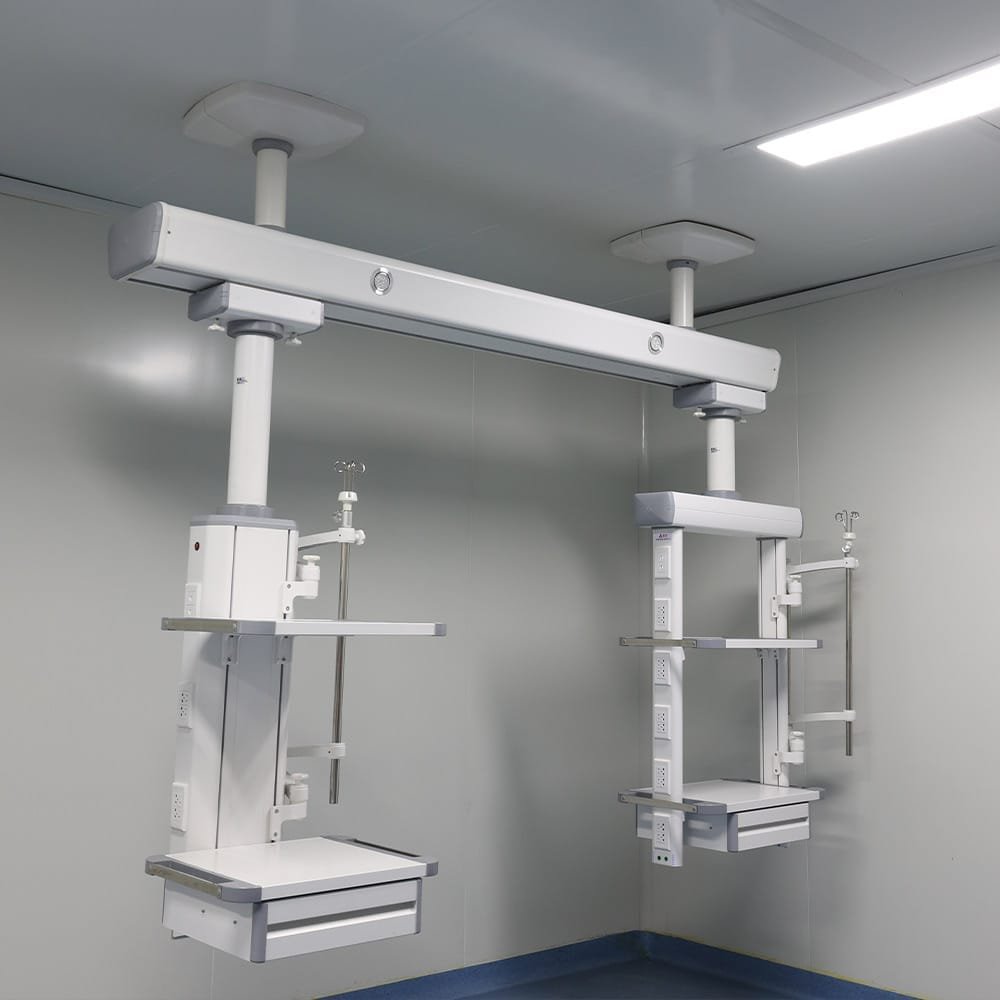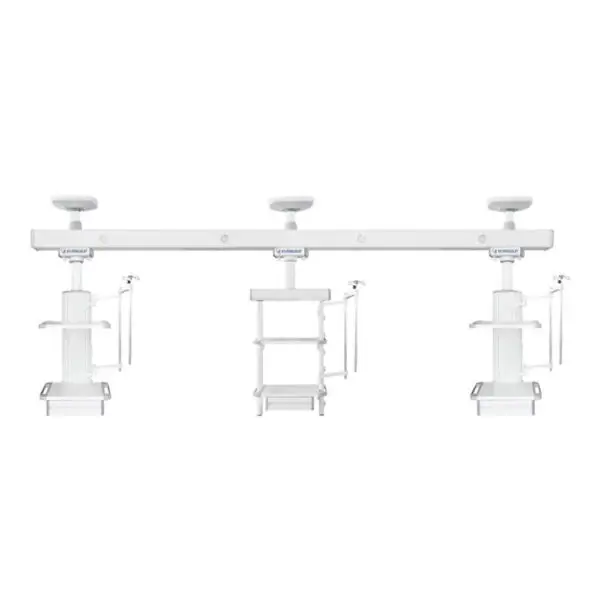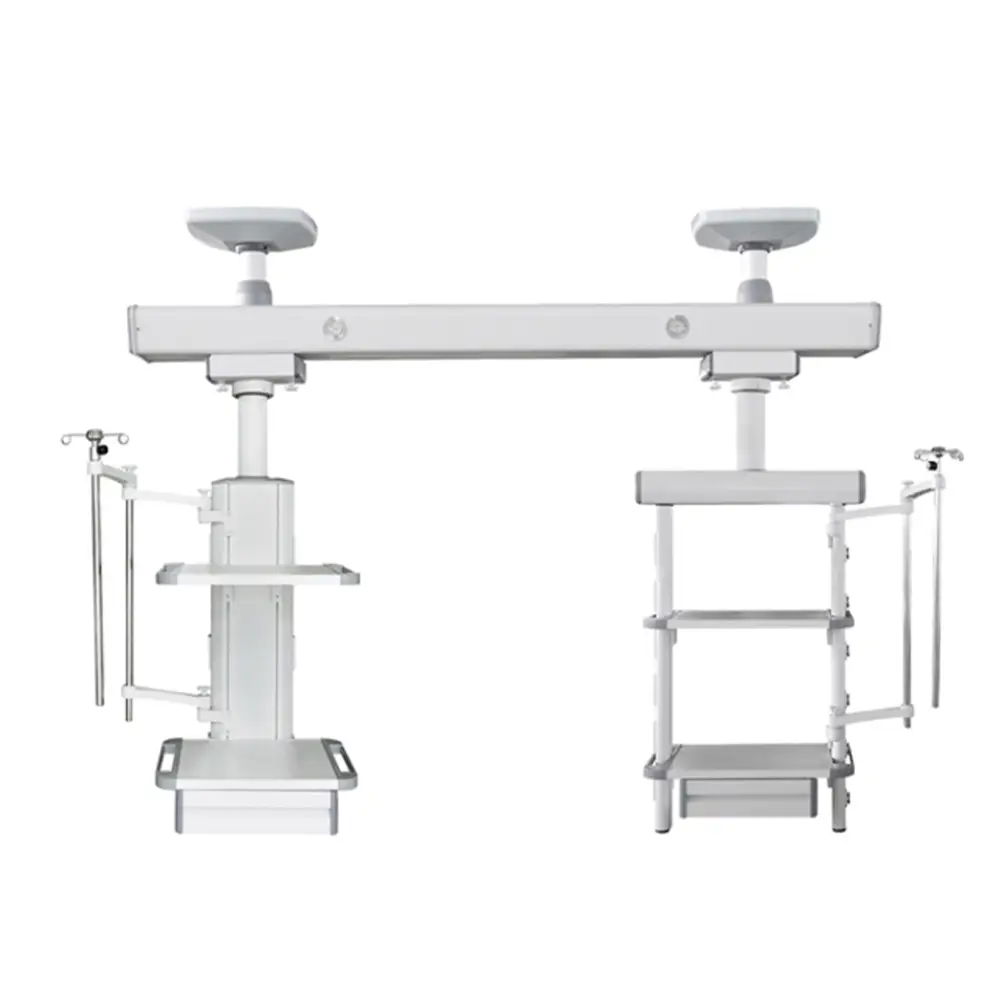Dirección
304 North Cardinal St.
Dorchester Center, MA 02124
Horas laborales
Lunes a viernes: 7:00 a. M. - 7:00 p. M.
Fin de semana: 10 a. M. - 5 p. M.
Dirección
304 North Cardinal St.
Dorchester Center, MA 02124
Horas laborales
Lunes a viernes: 7:00 a. M. - 7:00 p. M.
Fin de semana: 10 a. M. - 5 p. M.

Descubra cómo un sistema de colgante médico mejora la seguridad, el flujo de trabajo y la gestión del espacio en la UCI para una atención óptima al paciente.
¡Bienvenido a mi blog!
Antes de profundizar en el contenido, me encantaría que te unas a mí en mis plataformas de redes sociales, donde comparto más información, interactúo con la comunidad y publico actualizaciones. Puedes conectarte conmigo de la siguiente manera:
Facebook:https://www.facebook.com/profile.php?id=100071234835011
LinkedIn:https://www.linkedin.com/company/74943205/admin/dashboard/
YouTube:www.youtube.com/@shandongexpertmedicalequip4695
TikTok:www.tiktok.com/@expertmedical
Ahora, comencemos nuestro viaje juntos. Espero que el contenido que se incluye aquí te resulte interesante, interesante y valioso.

Un sistema de suspensión médica es un equipo esencial en las unidades de cuidados intensivos (UCI) modernas. Diseñado para optimizar los flujos de trabajo y facilitar intervenciones vitales, estos sistemas suspenden del techo servicios esenciales como tomas de gases medicinales, enchufes eléctricos y puertos de datos. De esta forma, se optimiza el espacio, se mejora la accesibilidad y se reduce el riesgo de tropiezos. Estos sistemas pueden ser fijos, móviles o motorizados, y suelen estar equipados con brazos o consolas que giran o se extienden para facilitar el acceso a los pacientes.
En una UCI, donde el tiempo y la precisión son cruciales, un sistema de monitorización médica bien diseñado puede influir significativamente en la evolución del paciente. Mejora la eficiencia, reduce el desorden y garantiza que los dispositivos de soporte vital estén siempre al alcance. En este artículo, exploraremos las principales ventajas de integrar un sistema de monitorización médica en la UCI, con el respaldo de datos y experiencias de usuario.
A medida que los hospitales continúan modernizándose, la integración de infraestructura inteligente, como los sistemas colgantes, ya no es un lujo, sino una necesidad. El objetivo es optimizar cada centímetro cuadrado del espacio de cuidados críticos, garantizando al mismo tiempo la fiabilidad y una respuesta rápida. Analicemos las ventajas clave que convierten al sistema colgante médico en un elemento innovador para las unidades de cuidados intensivos de todo el mundo.
Las UCI son entornos de alta presión donde cada segundo cuenta. Un sistema de monitorización médica permite a los profesionales sanitarios organizar y acceder a herramientas y servicios esenciales de forma estructurada y eficiente. Al centralizar las líneas de gas, electricidad y comunicación, estos sistemas eliminan la necesidad de múltiples conexiones de pared y cables enredados.
Este acceso centralizado no solo agiliza procesos rutinarios como la administración de medicamentos o el ajuste de la configuración del respirador, sino que también minimiza los errores causados por la desorganización. Con el tiempo, la optimización de los flujos de trabajo se traduce en un mayor rendimiento de los pacientes, mayor seguridad y resultados clínicos más consistentes.
La seguridad es una prioridad absoluta en cualquier UCI. Al suspender los dispositivos y cables por encima del suelo, el sistema de suspensión médica minimiza el riesgo de caídas, tropiezos y colisiones de equipos. Además, estos sistemas están diseñados para soportar cargas pesadas, lo que garantiza estabilidad y durabilidad en condiciones exigentes.
Además, el diseño estructurado de un sistema de suspensión médica reduce la tensión física del personal médico. El equipo se coloca ergonómicamente, lo que reduce el riesgo de lesiones por movimientos repetitivos o tensión en la espalda al manipular monitores o dispositivos pesados. Tanto para los pacientes como para los profesionales sanitarios, esto se traduce en un entorno más seguro y accesible.

Los hospitales suelen tener limitaciones de espacio, especialmente en entornos de cuidados intensivos. Un sistema de suspensión médica ayuda a optimizar el uso del espacio disponible al levantar los dispositivos del suelo e integrar múltiples servicios en una sola unidad. Esta característica es especialmente beneficiosa al acomodar varios monitores, ventiladores, bombas de infusión y otros dispositivos alrededor de una misma cama.
Al eliminar las configuraciones desordenadas en el suelo, el sistema facilita la movilidad alrededor del paciente, especialmente en intervenciones de emergencia donde la rapidez de maniobra es esencial. Además, la configuración organizada de los techos permite a los hospitales mantener una apariencia más limpia y profesional, lo que también tranquiliza a los pacientes y sus familias.
Los sistemas colgantes modernos son altamente personalizables. Pueden configurarse según los requisitos específicos de cada centro o departamento, incluyendo la longitud de los brazos, los ángulos de rotación y el número y tipo de tomas de corriente. Esta adaptabilidad garantiza una solución a medida para cada UCI.
Por ejemplo, las UCI pediátricas pueden requerir soportes especializados y consideraciones de tamaño, mientras que las UCI quirúrgicas pueden necesitar tomas de corriente adicionales para dispositivos de alta potencia. Las soluciones personalizadas garantizan la satisfacción de todas las necesidades clínicas sin comprometer la usabilidad ni la seguridad.
La higiene es crucial en una UCI donde los pacientes tienen sistemas inmunitarios debilitados. Las instalaciones tradicionales con cables y dispositivos en el suelo pueden acumular polvo y patógenos. Un sistema de suspensión médica montado en el techo reduce significativamente el riesgo de contaminación, facilitando la limpieza del suelo y las áreas circundantes.
Además de la facilidad de limpieza, muchos sistemas colgantes se fabrican ahora con materiales antimicrobianos que refuerzan los protocolos de control de infecciones en todo el hospital. Sus superficies lisas y selladas evitan la acumulación de polvo y materia biológica, lo que permite una rápida desinfección entre cambios de pacientes. Esto puede contribuir a reducir las tasas de infecciones nosocomiales (IAH), que siguen siendo una preocupación crítica en la atención médica moderna.
Las UCI suelen contar con un equipo de especialistas (enfermeras, médicos, terapeutas respiratorios, etc.) que trabajan simultáneamente con un solo paciente. Un sistema de monitorización médica facilita el acceso a las herramientas necesarias para todos los miembros del equipo, lo que fomenta la colaboración y reduce el tiempo perdido en el traslado de equipos.
Dado que el sistema permite acceder a diversos dispositivos y servicios desde cualquier lado de la cama del paciente, los profesionales sanitarios pueden realizar tareas simultáneamente sin interferencias. Esto fomenta la comunicación en tiempo real y el trabajo en equipo, especialmente durante procedimientos complejos o emergencias, donde la coordinación es clave para obtener resultados positivos.
A continuación se muestra una tabla que muestra las funcionalidades clave de un sistema de colgante médico y sus beneficios directos en un entorno de UCI:
| Característica | Funcionalidad | Beneficio en UCI |
|---|---|---|
| Integración de gases medicinales | Suministra oxígeno, vacío, aire, etc. a través de la unidad de techo. | Gases de soporte vital centralizados y de fácil acceso |
| Disponibilidad de tomas de corriente eléctricas | Alimenta monitores, ventiladores y otros dispositivos médicos. | Elimina los cables de extensión, lo que reduce el desorden. |
| Brazos giratorios/móviles | Ajustable para el acceso del paciente y la comodidad del personal. | Posicionamiento personalizado alrededor del paciente |
| Soporte de carga de equipos | Contiene bombas de infusión, monitores, unidades de succión, etc. | Libera espacio en el suelo y mejora la seguridad. |
| Puertos de datos y líneas de comunicación | Se conecta a la red del hospital y a los sistemas de llamada a enfermeras. | Mejora la monitorización del paciente y la eficiencia de la comunicación. |
| Diseño modular | Personalizable según los requisitos específicos del departamento. | Adaptable a las necesidades cambiantes de la UCI |
| cableado cerrado | Cables encerrados dentro de brazos o unidades | Promueve la higiene y reduce el riesgo de contaminación. |
Cada una de estas características contribuye a un entorno de UCI fluido y funcional. Al combinar múltiples servicios en un solo sistema, el personal médico puede trabajar con mayor eficiencia y los pacientes pueden recibir atención ininterrumpida.

En emergencias, el acceso rápido a los sistemas de soporte vital y a las herramientas de comunicación es vital. Un sistema de colgante médico garantiza que los servicios esenciales estén siempre al alcance de la mano. Su diseño ergonómico y su ubicación estratégica pueden marcar la diferencia entre la vida y la muerte cuando cada segundo cuenta.
Durante situaciones de código azul o fallos respiratorios repentinos, el personal clínico necesita acceso inmediato a líneas de oxígeno, desfibriladores y equipos de monitorización. La integración de estos recursos en el sistema colgante reduce el tiempo de intervención y evita la falta de comunicación entre los miembros del equipo. Además, al tener menos cables y dispositivos en planta, se crea una zona de respuesta más segura y rápida.
Las UCI actuales están cada vez más digitalizadas. Los sistemas de monitorización médica se integran con tecnologías inteligentes como paneles táctiles, diagnósticos remotos y dispositivos de monitorización con IoT. Estas integraciones permiten a los profesionales sanitarios controlar la iluminación, supervisar el consumo de energía e incluso recibir alertas del sistema desde la unidad de monitorización.
Estos sistemas inteligentes también pueden proporcionar análisis en tiempo real sobre el consumo de energía, los patrones de uso y las necesidades de mantenimiento. Esto no solo mejora la eficiencia operativa, sino que también se alinea con los objetivos de sostenibilidad y control de costos de los hospitales. A medida que la tecnología de las UCI evoluciona, los sistemas colgantes médicos seguirán siendo un componente fundamental que impulsa la innovación.
Si bien la instalación de un sistema de monitorización médica requiere una inversión inicial, los beneficios a largo plazo superan con creces los costos. Estos sistemas contribuyen a:
Los hospitales que han adoptado sistemas colgantes avanzados informan menos incidentes, un flujo de trabajo mejorado y puntuaciones más altas de satisfacción del paciente.
En términos financieros, el retorno de la inversión (ROI) de un sistema de monitorización médica se hace evidente mediante la reducción del tiempo de inactividad del equipo, la disminución de lesiones laborales del personal y la reducción de las estancias hospitalarias de los pacientes gracias a una mejor atención médica. Con el tiempo, el sistema se amortiza con ahorros directos e indirectos.

En todo el mundo, los hospitales que han incorporado sistemas de monitorización médica en la distribución de sus UCI han experimentado mejoras notables. Por ejemplo, un centro de atención terciaria en Singapur informó una reducción de 25% en el tiempo de respuesta a los pacientes tras instalar sistemas modulares de monitorización médica. De igual manera, un hospital en Alemania observó una mayor satisfacción del personal de enfermería y una reducción del esfuerzo físico gracias a los brazos móviles y la posición ergonómica de la consola.
Otro caso en Canadá reveló que la optimización del espacio en la UCI mediante sistemas colgantes permitió al hospital aumentar la capacidad de pacientes en 15% sin ampliar su espacio físico. Estos resultados refuerzan el valor práctico de invertir en una infraestructura colgante robusta.
En conclusión, el sistema colgante médico Es un pilar fundamental de la infraestructura moderna de las UCI. Desde la mejora de la seguridad y la higiene hasta la optimización del flujo de trabajo y el apoyo a las nuevas tecnologías, los beneficios son integrales e impactantes. Los hospitales que adopten esta innovación estarán mejor preparados tanto para la atención diaria como para las emergencias críticas.
Si está planeando actualizar o diseñar una nueva unidad de cuidados intensivos, la integración de un sistema de colgante médico de alta calidad debe ser una prioridad máxima. Contáctanos Visítenos hoy mismo para descubrir cómo nuestros sistemas colgantes pueden transformar su UCI en un entorno más seguro, eficiente y preparado para el futuro. Nuestro equipo de expertos está listo para ayudarle con la personalización, la instalación y el soporte para el éxito de su centro.
¿Cuál es el propósito de un sistema de colgante médico?
Un sistema de monitorización médica organiza y proporciona servicios esenciales como gases medicinales, energía y puertos de datos en áreas de cuidados críticos, lo que ayuda a optimizar el espacio y la seguridad de la UCI. Está diseñado para que la atención al paciente sea más eficiente y organizada.
¿Cómo funciona un sistema colgante médico ¿Mejorar el flujo de trabajo?
Al centralizar el equipo y elevarlo del suelo, se reduce el desorden y se mejora la accesibilidad, lo que permite al personal médico trabajar con mayor eficiencia. Facilita tiempos de respuesta más rápidos y una mejor coordinación durante el tratamiento.
¿Se puede personalizar un sistema de colgante médico?
Sí, la mayoría de los sistemas son modulares y se pueden adaptar a las necesidades específicas de la UCI, incluyendo el número de brazos, las tomas de corriente y los tipos de servicios integrados. Esto garantiza que el sistema se ajuste a las necesidades operativas del equipo médico.